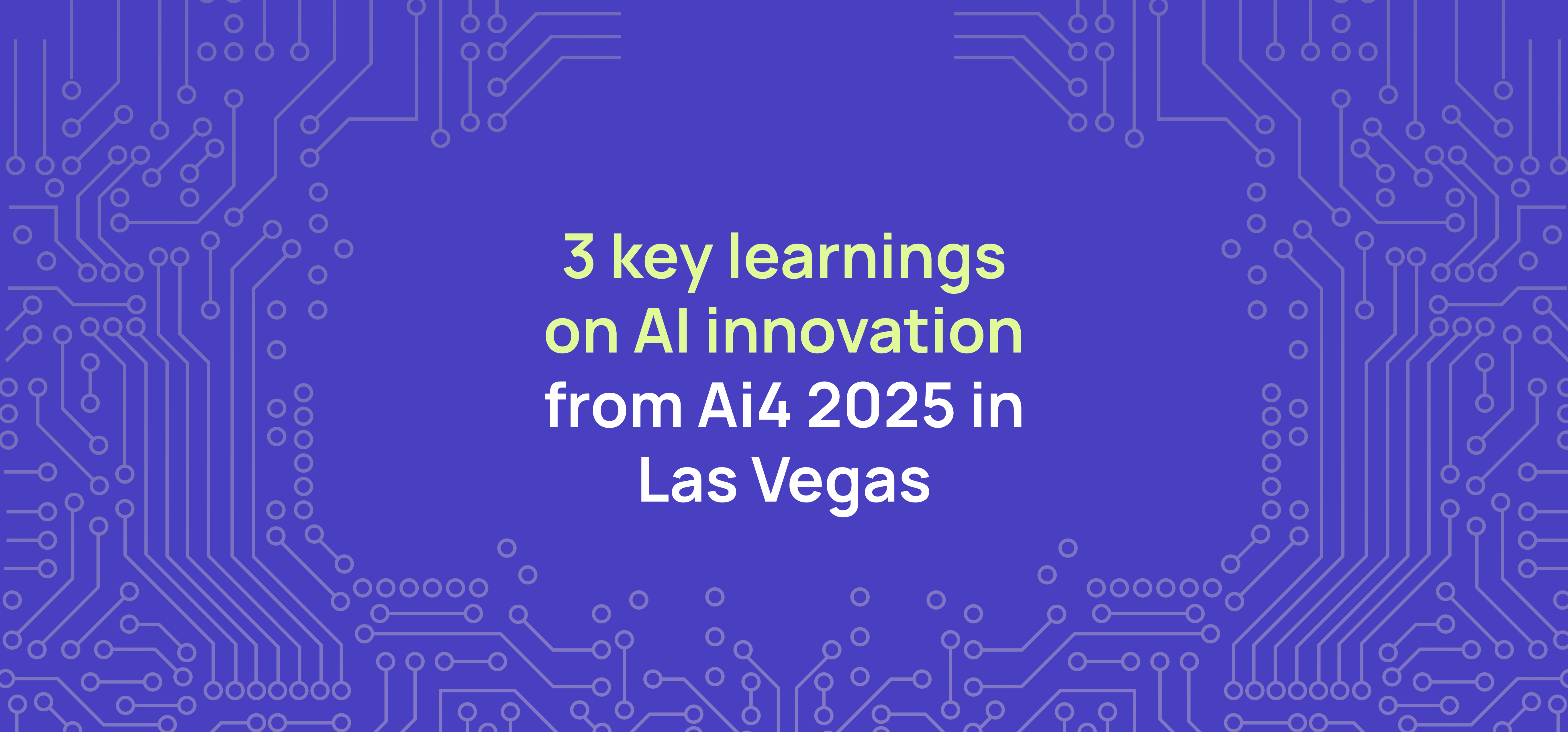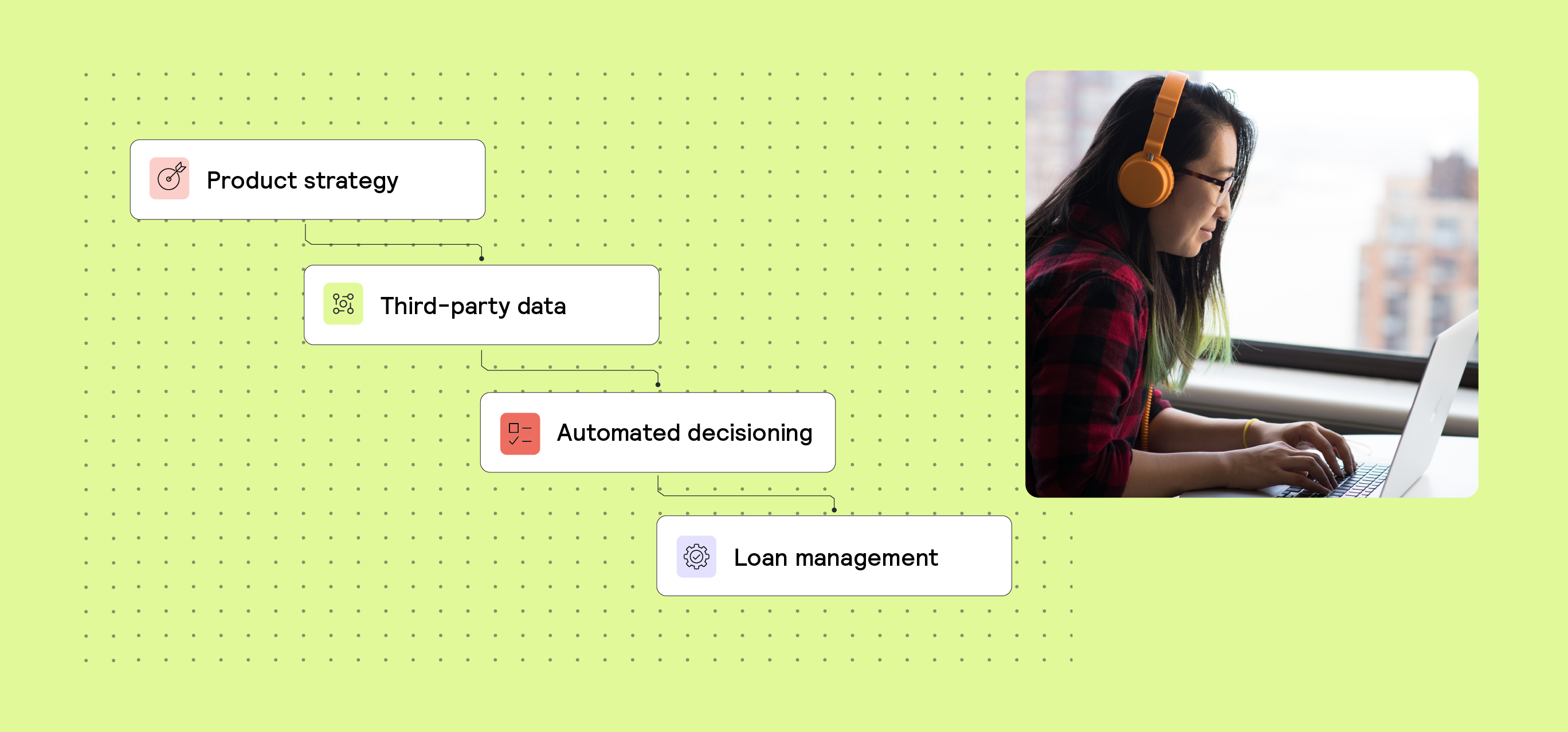
Last week in Vegas, the Ai4 conference met for the eighth year to bring together developers, data scientists, business leaders and technologists to talk about all things AI. I attended many sessions, and had a lot of conversations with people in the space, and here’s a recap of what I believe coming out of it.
3 key takeaways
1. We are in innovation mode, even as the early majority join
Everyone is under pressure to adopt AI. Leaders need an answer to the question "what are you doing about AI," and they need to show that they’re investing here.
Everyone knows this is a massive transformational shift, and we’re at the stage where the possibilities outstrip the established patterns. As a result, people are treating projects as experiments, to see what will float and what will sink. This experimental approach brings with it a tolerance for a relatively high failure rate. In a session called “Driving AI ROI,” PayPal’s Jyothi Srirangam posed the question “If I tell you that more than 50% of AI projects fail, would you still invest in them?” Multiple people shouted out “Yes!” and I saw nodding heads around the room. She followed up:
“Gartner reports that more than 30% do not make it beyond the pilot stage. And here is the kicker, by the end of 2025, more than 30% of generative AI projects will not make it beyond the proof-of-concept stage.”
That said, the acknowledgement that these are unproven applications of a new technology is driving the appetite for risk. In his talk, Rajesh Janu of Mastercard referenced the infamous incident with Knight Capital Group. This took place back in the AI stone age of 2012, but serves as a cautionary tale: Through a “glitch” in their algorithm, they lost over $440m in only 45 minutes, throwing the market into chaos and nearly destroying their firm in the process. Stories abound of the financial and reputational damage caused when AI goes awry, or is led awry by bad actors. (See this piece, which is really focused on the DevOps side of this incident, but is a very interesting 5-min read)
While the risk at the front of the pack may drive some away from more cutting-edge use cases, there are some use cases where the early majority are leaning in. This divide seems more obvious in finance. Some of the more established / accepted use cases I heard about in finance were staff productivity tools (CIBC’s Chris Patterson showcased an award-winning suite of employee productivity tools based on OpenAI), customer support agents and customer-facing documentation.
What we’re seeing here is really interesting from a “Crossing the Chasm” standpoint: We have the early majority coming in for safer and more established use cases, at the same time that we are seeing innovators still finding the limits of technology, business and users.
2. Financial institutions have to figure out how to deal with non-deterministic AI
In computer science, the concept of “deterministic” vs. “non-deterministic,” refers to whether an algorithm, given particular input, will always produce the same output going through the same states to get there (deterministic), or not (non-deterministic).
Generative AI has entranced and delighted us in large part because of its non-deterministic nature; it can be creative, it can deliver the unexpected, it can surprise you with the connections it makes. For many tasks, these are all great benefits.
In finance, there are so many wonderful possible applications of Gen AI to reduce manual work and improve the customer experience, but we need to reconcile the non-deterministic nature of Gen AI (and to an even greater degree, Agentic AI) with regulations and risk frameworks. Financial institutions have long had to ensure that there is no bias in their systems, that all decisions are explainable and replicable. Moreover, in order to justify the decisions, they need to be predictable. I heard several versions of this in different talks, both in terms of FI’s internal risk frameworks and regulatory concerns.
In one session, EJ Achtner, Head of Applied Artificial Intelligence at BMO said it this way:
“You have to be able to measure things, you have to be able to repeat things, you have to be able to prove, mathematically, in most cases, that you have a good idea of what the next outcome is going to be.”
That does not sound like generative AI. This is compounded when you consider context awareness and retrieval-augmented-generation (RAG) with an ever-changing catalog of materials. The stoic Heraclitus said “No man can ever step into the same river twice, for it is not the same river and he is not the same man.”
What strikes me in this discussion is that we’re trying to use AI to replace tasks completed by people. I’m not sure it gets more non-deterministic than humans… So do we need to update our thinking about determinism and instead rely on auditability, transparency and analysis? Or do we need to figure out how to make Gen AI more deterministic?In my opinion, we should work to do both.
Speaking to his view on this in risk and compliance, Dustin Eaton, Principal of Fraud & AML at Taktile, states:
“Explainable orchestration in AML and fraud concerns more than tracking criminals; it proves the rationale for every action taken. Automated decisions made by black box AI lack the auditability and flexibility needed for proper context. Here’s the good news: Transparency and explainability are how we bridge trust and innovation in AI technology and regulatory frameworks.”
3. Regulation is the wild card
Nearly everyone I talked to was worried about the uncertain regulatory environment in the near future. Mostly, right now, it’s a question of whether AI will be regulated at the federal level, the state level or both. I think tech is somewhat used to this (see privacy regulations for a good analogy) and so is business (see taxing or banning of certain food ingredients at the federal and local levels), but knowing that it’s coming without any idea of exactly WHAT is coming (or when), is a problem.
The EU’s first Artificial Intelligence Act may be a good indicator. For those in finance, this act identified credit and insurance underwriting as “high-risk” use cases for AI.
Side note: Our Co-Founder Maximilian Eber (together with Philipp Hacker) wrote a comprehensive article in the Harvard Data Science Review explaining what this means for financial services once the act comes into force.
While companies do not seem to be succumbing to paralysis over this, it does appear to be informing the use cases they go after first, and how they think about diversifying their project portfolio. Ravi Venugopal of Giggso talked about the importance of shelf life, and how companies “want to see which projects they can invest in which have a longer shelf life, and see how their money can go into those.”
While regulatory uncertainty is factoring into the estimates on shelf life for certain projects, companies are not holding their collective breath, everyone is finding initiatives to go after.
What this means, at an operational level
The conversations I had at this conference were very reminiscent of the startup world circa 2010 when the mobile revolution was getting real, except the time and money required to build experiments is much lower. Similar to how VCs were building portfolios of app startups, business leaders today are building internal portfolios of projects, and expecting a high failure rate, but a huge payoff for the successes.
It seems like companies doing this well are creating groups and positions within their companies to build a portfolio of projects, balanced in terms of timeframe, risk profile, and potential impact. Mona Hassanzadeh, Head of Data Science and AI at Meridian Credit Union, talked about how their AI steering committee functions as a centralized investment group, building a portfolio of investments based on risk, timeframe and impact, and then ensuring that those projects are run in a safe and operationally sound manner.
So how to approach these experiments? Leaders in the space are starting each experiment with a hypothesis grounded in a business metric, (What if we could double the speed with which we did X? What if we could reduce the cost of Y by 60%?), taking baseline measurements, scoping their investment in the experiment, and measuring the results. Calling back to the VC-driven startup investments in the 2010’s, the hot mantra was “fail fast.” That may be the key here as well. Enabling fast experimentation (or maybe more acutely, fast falsification) allows companies to objectively disqualify that which is not going to work to focus investment on that which will.
In terms of leveraging non-deterministic AI: I had a few conversations about how breaking the agentic workflows into smaller, more discrete work units can create visibility and instrumentation on those work units. This allows for greater control, visibility, and auditability. This can also help structure the prompts more concretely.
Prepare for the unpredictable. The difference between prediction and preparation is such an important concept, and one that I thought a lot about in these sessions and conversations. You can’t know what the future will look like, and you can’t predict inherently unpredictable “black swan” events, but you can do things that make you resilient for many possible futures.
In this case, it’s about building diversity (of providers, audiences and use cases) into your project portfolio, making yourself more adaptable by setting up for rapid iteration, managing your exposure, and “red-teaming” your technology to find risk before it finds you. The new breed of AI Leader in business is discovering and refining the patterns as the application of this technology matures, and it’s really exciting to be part of it.
I’ll end on a different note, one that the conference actually began with: The keynote speaker, Randi Weingarten, President of the American Federation of Teachers, opened the conference with a plea for us to “build a future we want to live in, one that we want our kids to live in.” We are in watershed times, and all of us need to remember our responsibility to our society and our collective future as we decide how to move forward.
Thoughts? Questions? Please hit me up, I’m always happy to talk.






